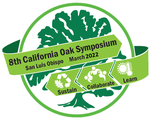#51

Can Grazing Reduce Wildfire Risk?
Katherine Siegel, Theresa Becchetti, Stephanie Larson, Matthew Shapero, Fadzayi Mashiri, Lulu Waks, Luke Macauley, Van Butsic
Livestock grazing has been removed from many rangelands due to concerns grazing negatively impacts ecosystems. Historically grazing pressure was one of the greatest tools for reducing fine fuels that carry wildfires. There is a growing concern about the negative impacts of wildfires on rangelands, forest and communities across California, which has seen increasingly larger and more severe wildfires. Livestock can play a role in reducing wildfire risk by removing fine fuels and preventing potential conversion to shrub species. While data suggest that grazing may reduce fire severity and size, there is little research into the effects of grazing on fire at the landscape scale. Mega-fires and unprecedented expenditures on fire suppression over the past decade have resulted in a renewed focus on pre-suppression management. Livestock are an appropriate tool to reduce fire fuels and grazing post fire increases the resistance of plant communities to post fire invasion and dominance by invasive species. We ask if livestock grazing on California rangelands can reduce the potential for and severity of wildfires in California at the landscape scale. Using past data of wildfires, climate, vegetation type, land ownership and biophysical variables we determined if grazed areas burned less frequently and/or with less severity than non-grazed areas. In addition, we seek to identify trade-offs and synergies between grazing and wildfire management. Grazing by livestock is likely the most cost effective and practical treatment to apply across large landscapes scales to manage herbaceous fuels.
